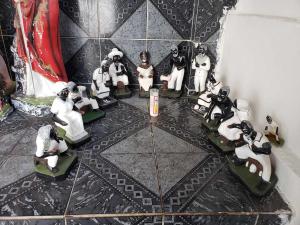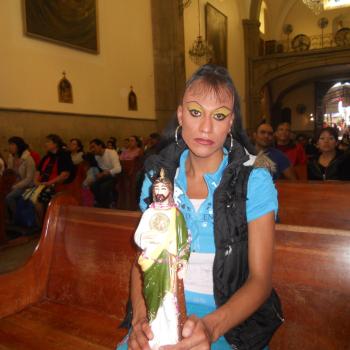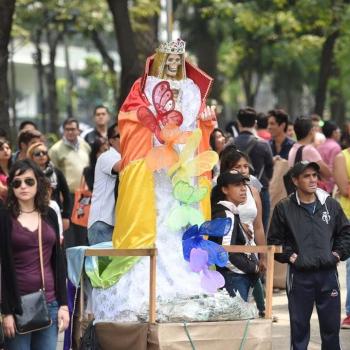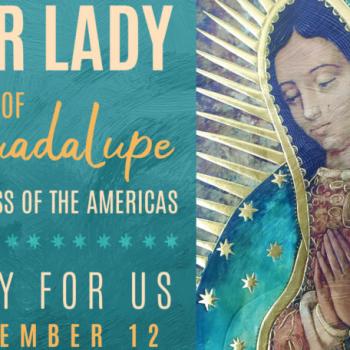
Escrava Anastácia, or Slave Anastacia, is a fascinating figure on the Brazilian spiritual landscape who serves as both a vernacular saint in folk Catholicism and a spirit guide in the Afro-Brazilian religion of Umbanda. Her story encapsulates a tragic and compelling narrative that intertwines historical accounts of slavery, racial identity, gender oppression, and spiritual resistance. While the existence of Anastácia as an actual historical figure is dubious, her legend has endured and transcended time, symbolizing the resilience and resistance of Black Brazilians.
With almost half of all enslaved Africans shipped across the Atlantic to Brazil, it was the epicenter of the transatlantic slave trade that brought millions of Africans to both the Portuguese colony and the country as an independent nation. Africans of dozens of different ethnicities were subjected to brutal conditions, labor exploitation, and the denial of basic human rights mostly on the country’s sprawling sugar plantations. Conditions on the plantations were so harsh that the average life expectancy for enslaved Africans was a shocking 21 years! Slavery in Brazil lasted for over three centuries, until it was finally abolished in 1888, and left a lasting impact on the nation’s social and religious fabrics. Anastácia’s story developed in this context of systemic oppression, offering a glimpse into the lived experiences of enslaved Africans and their struggle for freedom.
According to folklore, Anastácia was an enslaved African woman in the present-day state of Minas Gerais during the nineteenth century. She was known for her beauty, fortitude, and remarkable resistance to abuse. Legend has it that Anastácia’s rebellious spirit led her to defy the oppressive and cruel plantation owner and his jealous wife, which eventually led to her punishment by having an iron muzzle forcibly welded onto her face. The muzzle was intended to silence her permanently and prevent her from voicing her defiance. Despite this torture, Anastácia’s spirit remained steadfast, and she became a symbol of resistance and resilience for millions of Black Brazilians.
Slave Anastácia’s story has transcended the frontiers of folklore, permeating various facets of Brazilian culture. She has been depicted in literature, visual arts, music, and religious beliefs and practices. Artists and writers have drawn inspiration from Anastácia’s story to explore themes of racial and gender identity, suffering, and liberation. Her image is often portrayed as a powerful Afro-Brazilian woman, representing the strength and beauty of African heritage. Upon contemplating her image one cannot escape the glare of her deep blue eyes. While some Brazilian observers assert that her eye color is the legacy of European racism in which light eyes and white skin are the standards of beauty, a devotee in Salvador da Bahia told me that her eyes are blue because she was an African princess and that some African royalty have light color eyes.
In terms of religion, Anastacia doubles as both a folk saint in vernacular Catholicism and a spirit guide in the Afro-Brazilian religion of Umbanda. In Rio de Janeiro several years ago there was a campaign to have her beatified by the Roman Catholic Church, but it was rejected on the grounds that there is no historical evidence for her existence as a real person. Ironically, Saint Juan Diego was canonized a couple decades ago despite the lack of proof that he ever existed. In fact, the rector of the Basilica of Our Lady of Guadalupe resigned in protest over his canonization! So her most important shrine in Rio de Janeiro is located at the Sanctuary of Slave Anastacia, which is a parish church belonging to the Brazilian Catholic Church, a schismatic breakaway from the Roman Catholic Church.
A life-size statue of Anastacia is located to the left of the altar and the only other figure that claims more space in the sanctuary is Jesus. At the entrance of the small church there are two separate rooms housing Catholic saints, additional images of Anastacia, and Pretos Velhos, the Old Black spirit guides of Umbanda. Many of the Catholic saints present double as Orixas in Candomble. For example, Lazarus is Omolu, Saint Expedite is Logunede’, and Saint Barbara is Xango. In the room primarily populated by Pretos Velhos, Anastacia is at the center of a group of them conveying the idea that she is their leader.
During my interview with the manager of the sanctuary she stated that Umbanda rituals are never conducted on church grounds. However, at Umbanda terreiros (ritual centers) across Brazil Mothers and Fathers-of-the-Saints incorporate the spirit of Anastacia for purposes of healing, protection, and spiritual empowerment. The recent mass I attended at the Slave Anastacia Sanctuary was a lively Charismatic-style service no different than Roman Catholic ones with the exception that at the end the priest, who was Black, approached the effigy of Anastacia and invoked her presence for healing in general and also for specific members of the congregation who were ill.
In short, Anastácia’s compelling narrative intertwines themes of race, gender, and power dynamics prevalent in Brazilian society. As an enslaved Black woman, she confronted the dual oppressions of racism and sexism. Her story underscores the resilience and resistance of Afro-Brazilian women in the face of dehumanizing conditions. Her iron muzzle is a powerful metaphor for the silencing and canceling of Black women’s voices since the advent of European colonialism and imperialism. Her legend challenges the dominant narratives that sought to marginalize and diminish the agency of enslaved Africans, particularly women, in shaping their own destinies. And her spirit empowers devotees to cope with or even overcome the serious challenges of daily life on the urban periphery of Brazil.


















